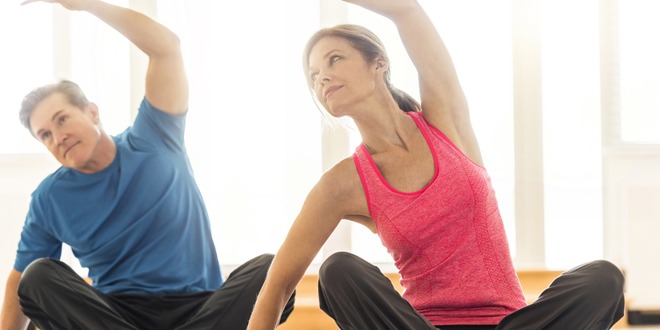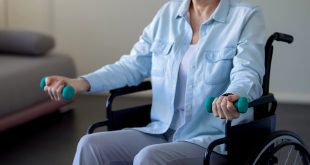I had the good fortune of sitting in on an introductory session being given by Kerseri Scane to our new Rehab group. Kerseri is an American College of Sports Medicine Clinical Exercise Specialist and is extremely knowledgeable in the physiology of exercise. The introductory session was all about the importance of doing a cardiovascular warm up cool down exercises. Here is an excerpt from that session:
The purpose of a warm up is to gradually prepare the heart, lungs, blood vessels and muscles for safe, effective and comfortable exercise.
The increased level of activity during warm up causes an increase in temperature in both the working muscles and the body as a whole. This increase in temperature speeds up various enzymes and other chemical reactions, causing your blood vessels including the coronary arteries, to relax and dilate. This results in an increase in blood flow to the working muscles and the heart.
The increased blood flow means that more oxygen is available to the working muscles (e.g. to the legs) and to the heart muscle. Therefore, it allows the body to exercise without undue physical stress. In addition to getting the body ready to move, warming up properly can help prevent injury and improve performance
How to Warm-Up:
- The warm up is really a slower version of your exercise. It should be the same type of exercise or at least similar to the activity you will do during your exercise, but at a lower intensity.
- For example,
- if you exercise on a stationary bike, then you should also warm up on the bike for at least 5 minutes, but at a slower pedal speed and with little or no resistance
- if you plan to walk, then do a slow walk for a minimum of 5 minutes at a slower pace than your intended exercise walking pace.
- We recommend a minimum of 5 minutes to warm up, but the time required varies from one individual to another. Age, fitness level, presence or absence of symptoms, exercise intensity and weather conditions can influence the length of warm up required.
The Importance of the Cool-Down
- The most important function of cool down is to reduce blood pooling in the legs. During walking or cycling exercise, there is increased blood flow to the working muscles in your legs. If this increased flow is not returned to the upper body in a balanced way, there will be pooling of blood in the legs.
- Your leg veins are situated next to the muscles in your leg. During exercise, the leg muscles alternately contract and expand, pressing against the leg veins. In this way, the muscles help to move the blood through the veins back to the heart. If exercise stops abruptly, the leg muscles no longer help the heart and the balance of blood flowing into the legs is greater than the blood flowing back to the heart. Thus, pooling of blood occurs in the legs with less blood returning to the heart and less blood for the heart to pump out. It is possible then, that you could experience light-headedness or dizziness.
- By walking slowly during cool down, the leg muscles continue to exercise and therefore continue to help pump blood back to the heart and reduce blood pooling in the legs. Because blood flow to the heart and head has been maintained, you are less likely to experience any of the above symptoms.
How to Cool-Down
A slow walk for a minimum of 5 minutes is advised for a proper cool down. If you exercise on a stationary cycle, then (as for warm up) cycle at a slower pedal speed with little or no resistance.
A note on Terminology:
Sometimes the term “warm up” has been used to describe stretching exercises that help to improve our flexibility. Flexibility training is important, however should not replace the cardiovascular warm-up described above where the purpose is to get the heart and lungs prepared for work!
 Diabetes Care Community Learn, connect and care
Diabetes Care Community Learn, connect and care




